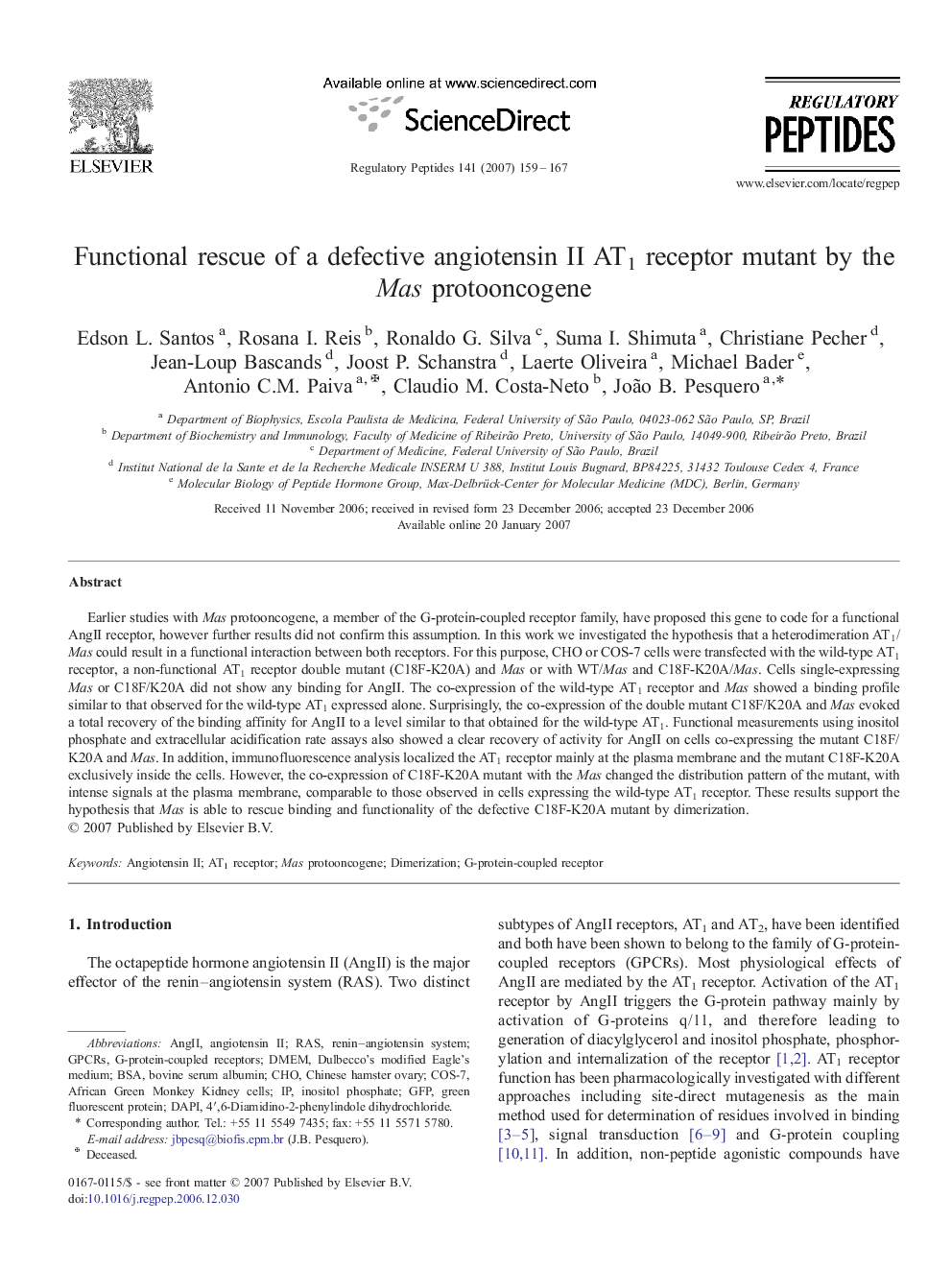| Article ID | Journal | Published Year | Pages | File Type |
|---|---|---|---|---|
| 2023306 | Regulatory Peptides | 2007 | 9 Pages |
Earlier studies with Mas protooncogene, a member of the G-protein-coupled receptor family, have proposed this gene to code for a functional AngII receptor, however further results did not confirm this assumption. In this work we investigated the hypothesis that a heterodimeration AT1/Mas could result in a functional interaction between both receptors. For this purpose, CHO or COS-7 cells were transfected with the wild-type AT1 receptor, a non-functional AT1 receptor double mutant (C18F-K20A) and Mas or with WT/Mas and C18F-K20A/Mas. Cells single-expressing Mas or C18F/K20A did not show any binding for AngII. The co-expression of the wild-type AT1 receptor and Mas showed a binding profile similar to that observed for the wild-type AT1 expressed alone. Surprisingly, the co-expression of the double mutant C18F/K20A and Mas evoked a total recovery of the binding affinity for AngII to a level similar to that obtained for the wild-type AT1. Functional measurements using inositol phosphate and extracellular acidification rate assays also showed a clear recovery of activity for AngII on cells co-expressing the mutant C18F/K20A and Mas. In addition, immunofluorescence analysis localized the AT1 receptor mainly at the plasma membrane and the mutant C18F-K20A exclusively inside the cells. However, the co-expression of C18F-K20A mutant with the Mas changed the distribution pattern of the mutant, with intense signals at the plasma membrane, comparable to those observed in cells expressing the wild-type AT1 receptor. These results support the hypothesis that Mas is able to rescue binding and functionality of the defective C18F-K20A mutant by dimerization.
